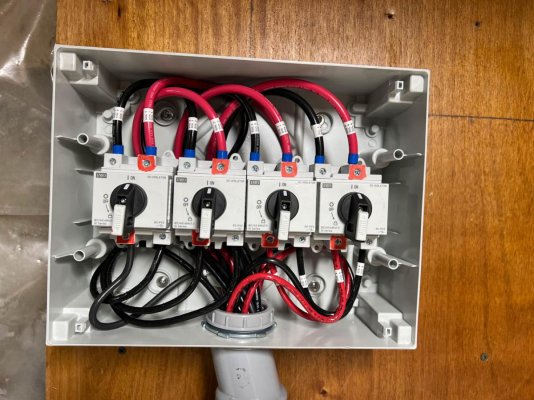MPPT Sizing
My mfgr: Victron Energy
My vendor: emarineinc.com
I am quite certain the model numbers of the Victron MPPT are made up of the
Maximum Voltage on the input side from Solar PVs | the Maximum output in Amps that one will ever possibly see coming from that controller.
So, my Mppt 150|35 can have a max number of 7x - 19 VDC PV Panels hooked in series to safely operate, and I will never see more than 35 Amps of charge current coming out of it.
Similarly my MPPT 100|20 can have 5x 19 VDC PV Panels hooked up in series, and I will never see more than 20 Amps of charge current coming out of it.
I currently have 4x 19 volt/200 watt panels. While my MPPT 150|35 can handle all of them hooked up in series, one of the panels is on the bow. A very long series circuit was not advised to have all of them hooked up to one controller. So, the one on the bow got its own controller, and the ones on the stern have their larger controller... I still have room for more there should I want to go there later on!
In reality, one never accomplishes the total max current the controller is theoretically able to produce. But the number helps in selecting the right fuse or circuit breaker for after the controller. (The max voltage IN should never be exceeded by design.)
I recommend you select a vendor who will give you plenty of pre-sales "engineering" so you get the guidance you need from an authoritative source. e.g. +1 for emarineinc.com in my experience
Marc Doheny there was very helpful. 954-764-9339
Side note:
While I have read "some people on the Internet" advocate for a separate Solar Controller for each PV panel. I also know that the MPPT panels won't start to produce until there is about 17 volts (5 "extra" volts) coming in before they wake up in the morning. SO, having 2 or more PV panels in series makes that 17 volt starting point happen earlier in the day. Consult with your expert/vendor to be certain for your design.


